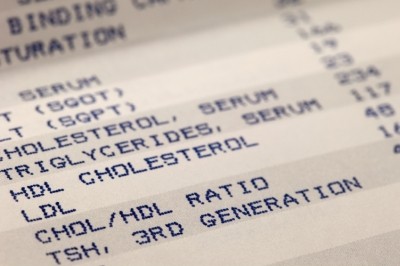Market opportunity expands as prebiotics' gut health role grows

Prebiotics, their growing role in human health and market opportunity
by Steve Hanson, CEO, GRIP IDEAS ― Executive Vice President of Business Development, Prenexus Health
The growing opportunity in prebiotics.
Prebiotics is a hot growth area in the dietary ingrediets space. Industry consultant Steve Hanson gives us his take on the major factors driving this growth.
Prebiotics are rapidly gaining more industry and consumer attention. Often, prebiotics and their role are confused with probiotics. While probiotics are the actual live, good bacteria, prebiotics are the food for these bacteria and for the bacteria already present in the intestine. More specifically, prebiotics are non-digestible ingredients that promote the growth of beneficial micro-organisms in the large intestine resulting in health benefits. Many insoluble forms of dietary fiber pass through the intestines unchanged, and would not be classified as prebiotics. However, many soluble fibers tend to contribute to the growth of beneficial bacteria and would be classified as prebiotics. Prebiotics, which cause growth of beneficial bacteria, are distinct from other ingredients and fibers that do not promote growth of beneficial bacteria. Common prebiotics include fructo-oligosaccharides (FOS), inulin, galacto-oligosaccharides (GOS) and xylo-oligosaccharides (XOS).
There are a number of factors driving market growth for prebiotics which include increased consumer interest in health and wellness, particularly digestive health, along with the increased investment in scientific research focused on the growing health benefits associated with prebiotics.
Health Benefits of Prebiotics
Over the past several years, scientific studies have demonstrated the importance of the microbiome in human health and the beneficial role both probiotics and prebiotics serve. Research on probiotics has been the primary emphasis and, more recently, the role of prebiotics has begun to emerge demonstrating an important role in the human diet. Prebiotics have shown to increase certain strains of beneficial bacteria, such as Bifidobacteria and Lactobacilli, that produce certain types of short chain fatty acids that reduce the pH in the gut as well as support healthy cholesterol and blood sugar levels. Prebiotics aid digestion, including relief of constipation and diarrhea. Studies have also shown that some prebiotics promote the absorption of certain nutrients such as calcium and magnesium essential for bone health, and reduce levels of compounds that are known to cause inflammation.
Growing Consumer Interest and Market Growth
According to the recent Food & Health Survey published by the International Food Information Council, one-third (33%) of Americans are trying to consume probiotics and more than 10% are trying to consume prebiotics. A recent report from BCC Research has estimated the existing global market for probiotics at $34 billion growing at 8.0% CAGR to $50 billion to 2020. The emerging market for prebiotics is estimated at approximately $3 billion and is projected to experience double digit growth during this same timeframe.
The applications for prebiotic ingredients include food & beverages, dietary supplements and animal feed. Food & beverage use accounts for 80 percent of the market volume followed by dietary supplements and animal feed.
Daily Intake/Consumption of Prebiotics
The recommended daily intake of dietary fiber is 25 to 38 grams for ages 3-50 years. On average, Americans consume around 15 grams of fiber daily or around half of the recommended daily amount. In regards to prebiotic fiber, there has not been an established consensus on recommended daily intake. Most recommendations range from 4 to 20 grams. The International Scientific Association for Probiotics and Prebiotics proposes a minimum of 5 grams daily of prebiotics. The USDA estimated the average intake of food-based prebiotics by Americans at 2.5 grams per day of FOS and 2.6 grams per day from inulin, with wheat products contributing about 70 percent of the total intake.
Market Developments for Prebiotics
In a market experiencing significant interest and growth, there are a number of ongoing developments. For the prebiotic market, these developments include:
1) A greater distinction between dietary fiber and prebiotic fiber. Prebiotics are fiber, but not all fibers are prebiotics. In order for a dietary fiber to be considered a prebiotic fiber, it must promote the growth of beneficial bacteria that leads to a health benefit. Recently, the FDA has updated its classification of fiber. Some prebiotics will classify under these regulations while others will not.
2) Scientific studies to expand beyond digestive health benefits. Further research with studies for promoting a healthy inflammatory response, maintaining normal blood sugar and lipid levels, weight management, sports nutrition and supporting immunity will broaden the health benefits beyond digestive health.
3) Increasing consumer awareness for prebiotics. As consumers become more aware of both probiotics and prebiotics, they will seek to understand their role and how they work separately and together. It will be the industry's task to educate consumers on how to use both together and individually.
4) New prebiotic ingredients will be introduced. The market will experience a number of new prebiotic ingredient introductions. Prebiotics such as xylo-oligosaccharides, isomalto-oligosaccharides and resistant starches will become more widely available.
5) Prebiotic research will determine which prebiotics selectively feed the good bacteria. A person's gut contains both beneficial and non-beneficial bacteria. Research will determine those prebiotic types that will feed the right bacteria providing the sought after health benefits.
6) New prebiotic types will offer expanded use and applications. New prebiotics such as xylo-oligosaccharides will provide health benefits at lower dose ranges desirable for food & beverage and supplement manufacturers seeking lower inclusion rates.
7) Probiotic and prebiotics will be combined to increase effectiveness. The potential for probiotics and prebiotics to work together in delivering enhanced benefits is an exciting field of study. These products have been referred to as synbiotics and offer another area for market development and growth.
Prebiotics and their great potential
With the market growth and increased interest in digestive health products, prebiotics offers a large opportunity for companies focused on developing products targeting digestive health and other health conditions. Markets for prebiotics will grow along with new research developments that will uncover greater knowledge of the microbiome as well as the value of specific prebiotics for digestion and a broader range of health benefits.
About the author: Steve Hanson is CEO and owner of Grip Ideas, a consulting firm focusing on global market development strategies and is an executive at Prenexus Health, a prebiotic supplier. Hanson has worked on a number of international brands inlcuding FloraGlo Lutein, Ester-C Vitamin C, Meg-3 Omega-3 and Meriva Bioavailable Curcumin.
















